10. Lightning Hits Commercial Jets Surprisingly Often (But They’re Designed To Handle It)
Many people may be flying near a thunderstorm and start to get worried when they see lightning striking around the plane. However, there really isn’t any cause to be seriously concerned. Lightning causing planes to go down is incredibly rare. Now, lightning does actually strike planes fairly often – on average about once per plane per year. This may sound incredibly alarming and terrifying, and people may wonder why planes don’t just drop out of the sky all the time. The reason is that planes are incredibly well designed to handle exactly that kind of punishment, as the design engineers knew that lightning strikes would be inevitable.
Much of a commercial airliner is made up of aluminum which essentially allows the lightning to pass through the airplane without doing serious damage. While it could blind a pilot for a few moments, this really wouldn’t be a serious issue. Most pilots spend more time than that not looking straight ahead through the window. Now, planes have gone down from lightning strikes before but the most notable examples were in the past before we had even more safety features than we have today. While it is possible for a lightning strike to cause a plane to crash, it is insanely unlikely.
9. Planes Can Glide For A Long Time Without Their Engines Working (And Even Land Safely)
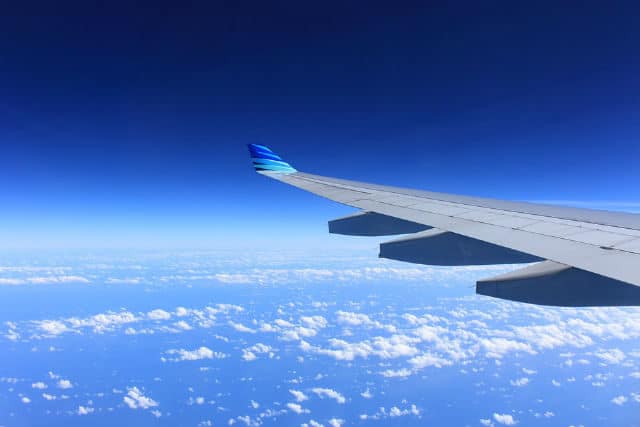
Imagine you are flying and the very worst happens. The plane loses not only some, but every single one of its engines. Most people would imagine that they are now completely doomed, but there is still hope yet. Depending on how high up the plane was, as long as there was no damage that caused it to lose control, a commercial jetliner can glide for a very long time without any engines at all, and the pilot still has a good amount of control. Airplanes are designed to glide and without engines you will lose height rapidly, but at maximum cruising altitude, a competent pilot should still be able to fly roughly 40-50 miles.
It would still be a scary experience to be flying as a passenger – the lights would dim and oxygen masks would be released. You would have to hope that the pilot could find a large enough area to safely land the plane within the time and distance they still have left to glide, or things could get very tricky very fast. However, if anywhere near an airport or airfield, you would not be in any serious danger and the pilot should be able to bring the plane down for a forced landing.
8. A Japanese Airline That Went Bust Tried To Prevent Stewardess Uniforms Being Sold To Sex Clubs
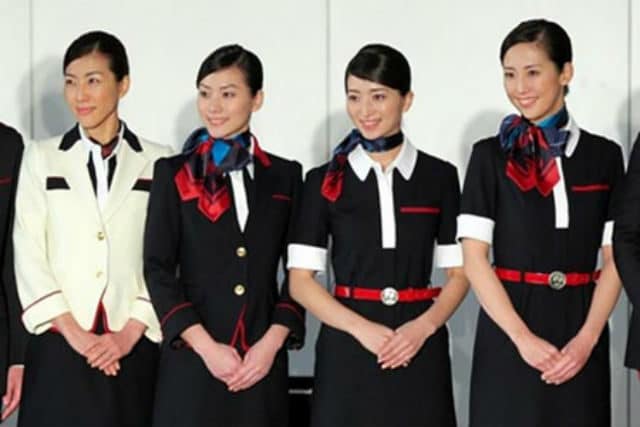
In the United States most people don’t really spend that much time thinking about their flight attendants, but in Japan, it is a full blown fetish. When one of Japan’s major airlines went bankrupt, one of the unique challenges they faced was trying to keep as many of their official flight attendant uniforms as possible from being sold to sex clubs and other fetish enthusiasts who really wanted to get their hands on the real thing.
The market for black-market flight attendant uniforms is thriving and they can sell for thousands – the price goes up by a lot if they are accompanied by a photo of the person who originally used the uniform. Some sex clubs in Japan who specialize in the flight attendant experience have even made up the inside of their clubs to look like the inside of an airplane to really get their customers in the mood.
7. Turbulence Has Gone Up Noticeably In Recent Years
Many people are under the impression that turbulence has gone up recently due to climate change, and unfortunately it looks like they are correct. A very recent report concluded that climate change could seriously impact the amount of turbulence we face, and that this could greatly affect airplane routes, as well as the amount of fuel needed to reach the destination and the amount of time it would take. However, while much of the report is more concerned with the bottom line of the airline industry, those who fly on planes are more worried about how dangerous this could make things for them in the sky.
And the truth is that turbulence is still not really very dangerous. Turbulence is not going to rip your plane out of the sky, and it isn’t going kill you or seriously injure you under normal conditions. There have been a few high profile cases recently where injuries happened due to extreme turbulence, but this was because people were not using their seatbelts and essentially ended up bumping their heads or other parts of their bodies when the planes hit a particularly rough patch of air. It may be more of a problem than it has ever been before, but turbulence harming you is still insanely unlikely.
6. Your Taste Buds Are Actually Working At A Significantly Decreased Capacity When You Are Flying

Airline food has a reputation for being either bland or strange, and many people will swear up and down that food and drink simply tastes different when you are flying. There is a lot of truth to this, and the reason is that while we are in the unique position of blasting through the sky in a pressurized metal tube at 35,000 feet, our bodies are not at all in anything like a natural environment. The inside of a commercial aircraft is insanely dry compared to on earth – even drier than a desert in terms of humidity. On top of that, the cabin is highly pressurized, which also messes with our perception of taste.
What this means is that our ability to taste sweet and salty foods drops by about 30%. This means that if you thought that airline food was bland, it was probably because you were unable fully perceive all the saltiness of the dish. This is a unique challenge for those making airline foods, because they want to balance the desire to make something people perceive as tasty at 35,000 feet, without adding an unhealthy amount of salt or sugar to make up for the decreased taste buds.
5. Commercial Jetliners Are Rarely Running With A Full Fuel Tank
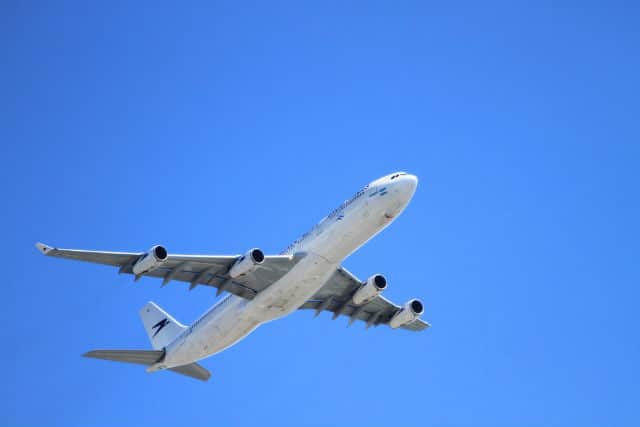
Back in 2008 NBC compiled anonymous complaints from pilots that the industry was doing everything it could to cut corners on fuel, as jet fuel costs had recently doubled. Now, FAA regulations already stipulate that the plane needs enough fuel to reach its main destination plus its nearest alternate, and then another 45 minutes worth of reserve fuel on top of that. However, some pilots feel that this isn’t really enough. Some pilots complained that if they had to wait in a holding pattern for too long, even that much extra fuel could start to dwindle rapidly, causing the pilot undue stress about the safety of the passengers they are trying to safely land with.
Some people may think that it would simply be a no-brainer to keep your planes topped off to ensure maximum safety, but the airlines don’t think this way. Apart from trying to save as much as they can on jet fuel costs, it is a matter of gas mileage and time spent. Time spent refueling is time that could be spent flying, and for every gallon of extra jet fuel in the tank, that actually decreases the mileage of the plane because it now weighs more. This means airlines are trying to skimp on fuel in the hopes that they can get better gas mileage, and are stressing out their pilots while doing so. It is still supposed to be the final say of the Captain as to whether the plane has a safe amount of fuel to take off with, but some pilots complained that they were getting increasing pressure from their dispatchers in recent years to take off with the amount they were simply told to take off with. While this hasn’t led to any major disasters yet, it is definitely concerning that the airlines care more about profit margins than they do about ensuring that the tanks are truly at a safe level of fuel.
4. Airline Security Is Actually Pretty Easy To Sneak Things Through, But Terrorist Attempts Are Still Rare
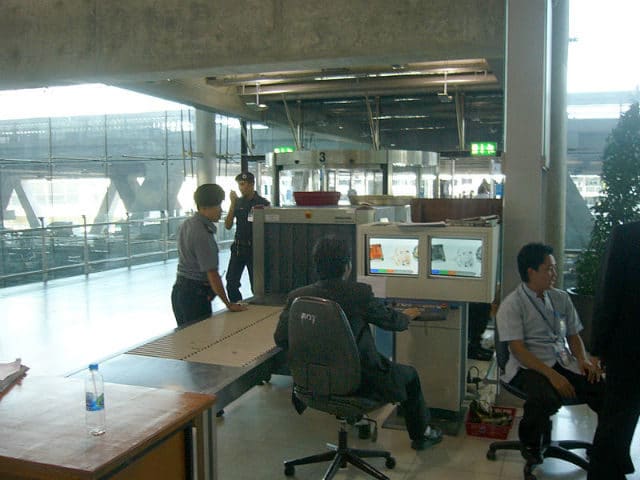
The TSA has been accused of being a huge waste of taxpayer’s dollars, security theater that does little to actually protect us and have even been given the less than affectionate nickname of “thousands standing around”. These people are often derided for taking away small containers of soup because it is too many ounces of liquid, while failing to find more important things, and generally not being trained as well at the job as we might need. However, despite their failings, many people still believe that they are at least keeping us somewhat safer and that their presence in the airports is a necessary nuisance for our protection.
However, one security expert named Bruce Schneier wanted to test if they were really worth anything at all, and spent time as a hobby using less than sophisticated tools to see what things he could sneak past the agents at the TSA – proving that a truly determined terrorist would not have that much trouble. He has carried through things like boxcutters, cigarette lighters, lengths of rope, large tubes of toothpaste, and a beer container you hide under your shirt for taking into ball games. He has done this while taking Hezbollah flags, wearing t-shirts with terrorist imagery and bringing inflatable Yassir Arafat dolls in his luggage. All of these are things he has managed to get away with through security screening. The truth is that the TSA wouldn’t keep out truly well trained stealth operatives. The reason why terror attacks in the sky wouldn’t work anymore isn’t because people can’t bring things onboard the planes – people have brought things on board recently, they have made attempts and been thwarted by their fellow passengers.
The reason is that people are aware now. See, back before the terrorist attacks in 2001, hijackings of commercial jetliners were actually quite common. But the thing was that all of those hijackings had been someone trying to gain money in some way and the passengers always ended up landing safely. When the 9/11 attacks happened, the passengers on the planes were likely thinking that it was some kind of hostage situation until it was too late to do anything. Now that people are expecting a suicide attack, they feel they have nothing to lose, and if terrorists try to take over a plane, the entirety of the passengers will take them on. For this reason it is no longer an effective strategy for terrorists and they have been focusing their attention elsewhere.
3. In Many Parts Of The World Airline Travel Is Safe, But Southeast Asian Airlines Have Issues
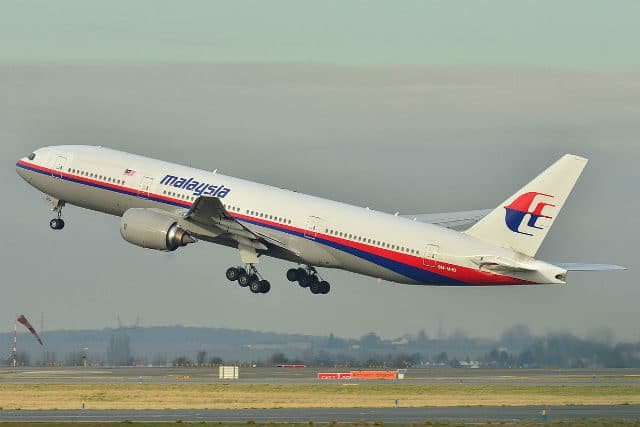
Some people have seen the recent spate of planes going1 down in the last few years, especially the very high profile disappearance of MH370, and started to wonder if air travel isn’t so safe anymore. And the answer is really that it depends on what part of the world you are traveling in and what airlines you are flying. For the most part the United States of America still has a very good air safety record, but Southeast Asia is increasingly struggling with airline safety, having a recent year with three high profile crashes with no survivors.
Many have wondered what in the world is going on with airlines in Southeast Asia, and it turns out there isn’t one simple answer. There are multiple factors affecting their efficiency and safety, and much of it comes to the infrastructure becoming increasingly spread thin. The amount of air travel within the region has increased greatly in recent years, with population growth in Southeast Asia, but the airlines cannot properly1 keep up with the demand. Essentially they need more and more air traffic controllers, but the pay is low and training isn’t fully adequate – even those they have are spread thin with their duties. To make matters worse, the region can already be challenging enough to fly in, and pilots are being put into the air with less and less experience to meet the demand.
2. Harrison Ford Somehow Manages To Keep Getting Into Plane Related Incidents
Harrison Ford is well known for being the man behind the iconic characters of Indiana Jones, Han Solo and so many others. He is also an incredibly accomplished pilot in his personal life – he has flown as a hobby for many years and logged thousands of hours. However, some are starting to wonder if the aging actor, now nearly 75 years old, should perhaps consider giving up flying at this point in his life, after a series of incidents over the last couple years. Back in 2015 during the filming of the new Star Wars it made the news that Ford’s small vintage plane had crash landed on a golf course in California. Ford was banged up and suffered a head injury but came out of the situation okay.
Then, very recently, Ford was coming in for a landing at John Wayne Airport in Orange County, California, when something strange happened. He flew right over a passenger jet and commented “was that airplane supposed to be underneath me?” It turns out that he had somehow landed on the taxiway that ran parallel to the runway he was supposed to land on, instead of landing on the runway itself. Luckily there were no injuries or damage, but one starts to wonder if Ford should consider taking it easy on the flying at least for a little while.
1. Mercury Is Not Allowed On Airplanes Due To The Unique Danger It Can Cause

Mercury is already a poisonous substance – neurotoxic to humans and most life, despite looking like the cool liquid metal that the bad guy from Terminator 2 is made from. However, it is also used in things like thermometers and has a lot of valid applications, so some may be surprised that it is banned from existing anywhere near an aircraft. The reason is that planes are made almost entirely of aluminum, and when recently scratched aluminum comes into contact with mercury, the resulting chemical reaction can tear through the aluminum like a hot knife through butter.
To make matters worse, the reaction will likely show its worst once the plane has actually taken off, which is about the worst time you want damage to happen to an aircraft. There are some claims that this was attempted as a sabotage method back in WW2 by various different governments who were looking for a cheap and sneaky way to destroy their enemies weapons of war. While this may or may not be true, it is true that mercury is not something you want to bring anywhere near a commercial aircraft.
No comments:
Post a Comment